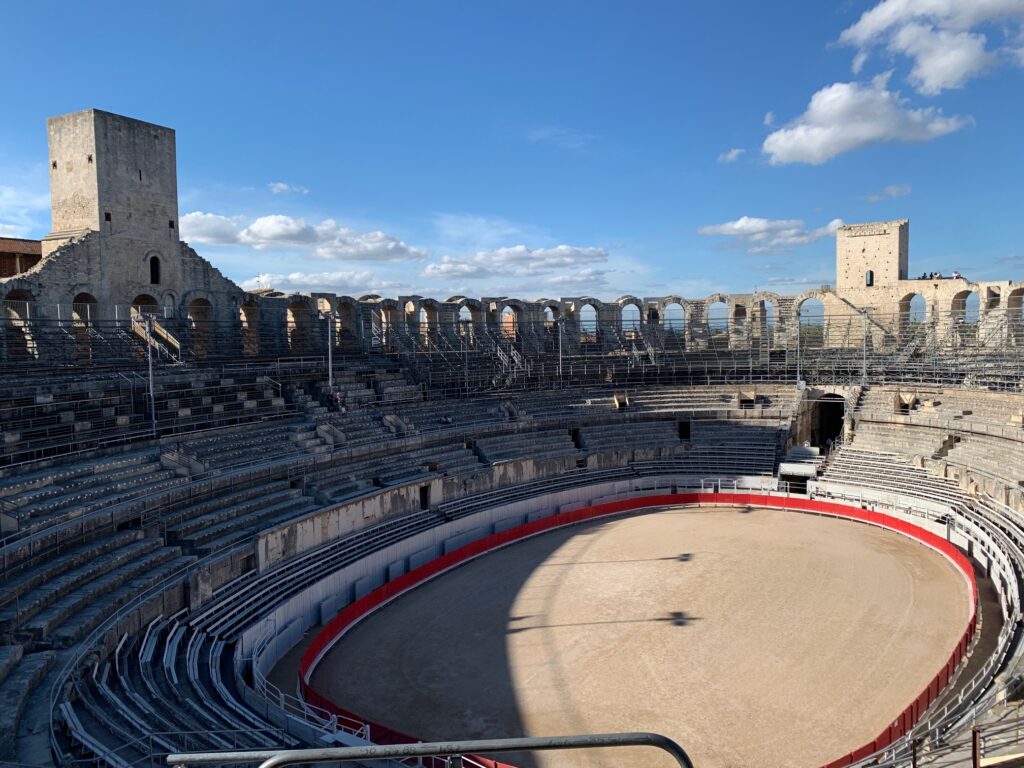The Arles amphitheater or arena
Highlights
Arles is a small city on the banks of the Rhone River that has been designated as a UNESCO World Heritage Site since 1981. It garnered this distinction because it has impressive Roman monuments such as the amphitheater or arena, the Roman theatre and the cryptoporticus (subterranean galleries). These date back to the 1st century B.C. The famous painter, Vincent Van Gogh once called Arles home and produced several masterpieces here.
Time of Visit: October 2023
Duration of Visit: Three nights
Description
Arles is a small city in southern France between the cities of Marseilles and Monpellier. It is rich in history despite not being relatively known compared to other French tourist destinations such as Paris or Nice. Arles has deep Roman influence. The most notable structures of Roman influence are the amphitheater and an open air Roman theater that dates back to the 1st century B.C. There are also the baths of Constantine which is a large public bathhouse of which only a third of it has been preserved.
Perhaps the most enlightening moment we had on our Arles visit was that Vincent Van Gogh and Pablo Picasso lived in Arles. The town pays tribute to Van Gogh by placing replicas of his painting at the locations where the painter set up his easel to draw the artwork. We were able to find six of them. There is a museum that showcases some of Picasso’s work too.
How to Explore Arles
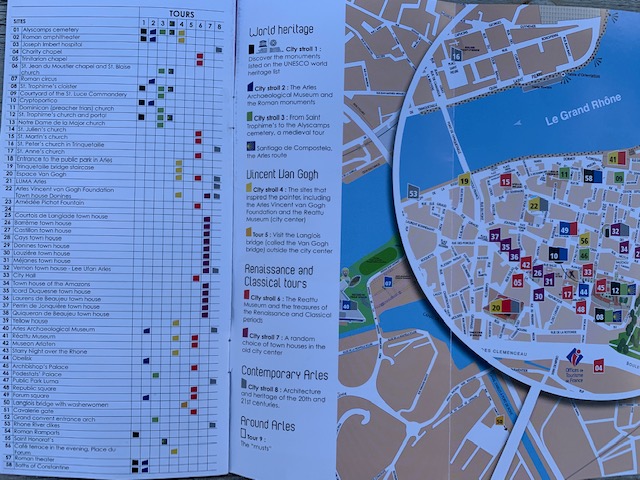

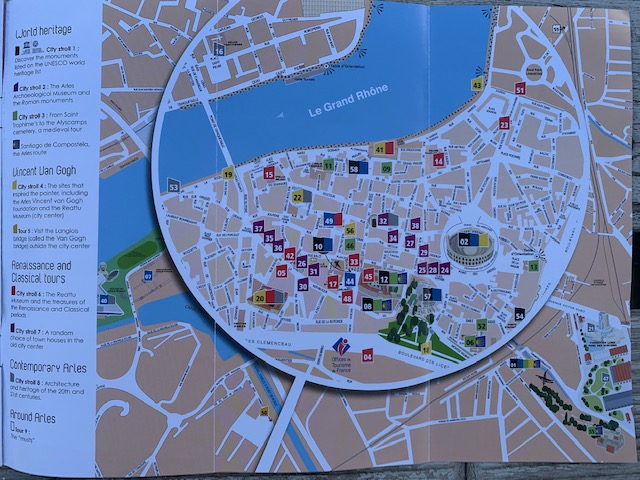

Having two full days to explore Arles was perfect. One day for seeing all the attractions and the second day for just leisurely walking the narrow streets and alleyways.
Our hotel had a map that showed the main attractions in Arles. But as we found out after visiting the Tourist Information office, the hotel map did not show all points of interest such as the locations where Van Gogh set-up his easels to come up with his famous painting. The Tourist Information office sells an Arles map showing the Van Gogh painting locations for 3 Euros.
Most of the main attractions in Arles do have an admission fee. You do have the choice to pay as you enter the attraction or purchase a pass that will get you to a number of attractions. There are two kinds of passes. We purchased the 15 Euro per person pass because we felt that the 19 Euro pass was just too much for us to complete in one day. We ended up seeing the Thermes de Constantin, arena (amphitheater), Roman theater and the Alyscamps. We also went to the Musée Réattu which we surprisingly enjoyed because we are not museum people. Pablo Picasso’s work is displayed here among many other artists of different time periods.
Thermes de Constantin (Bath of Constantine)
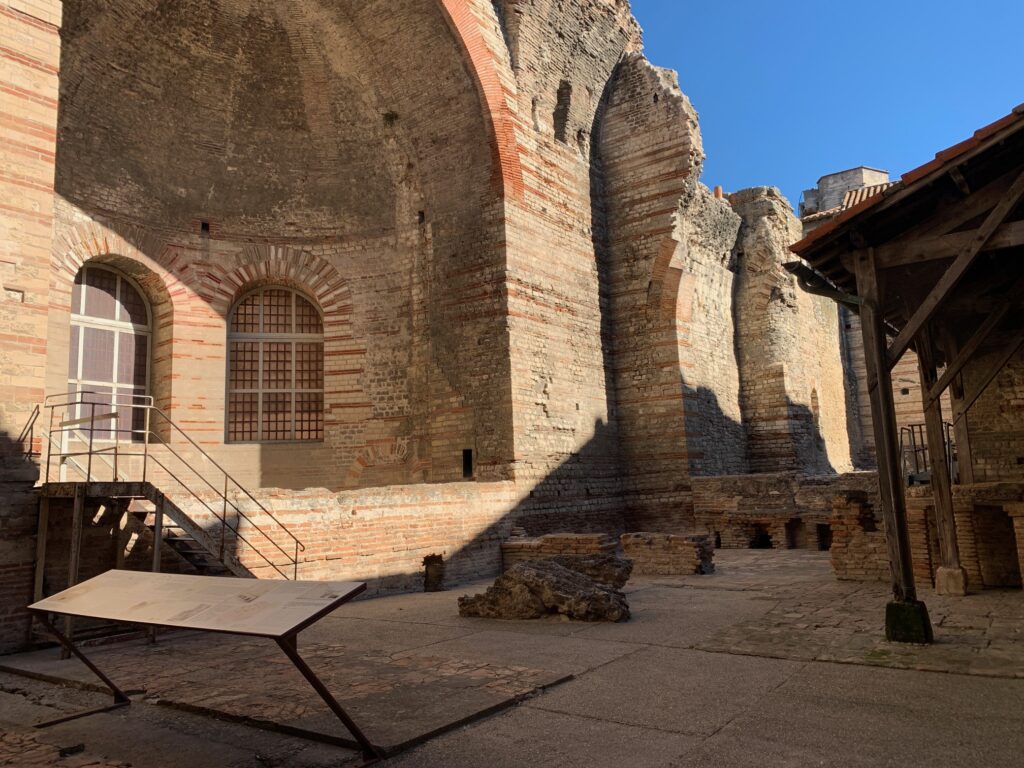

The place is basically brick walls with some interior structures remaining. It was hard to picture how people back in the days were using the bathhouse without the help of the posted illustrations. What was mind blowing for us was the size of the place. The walls are 20 feet to 30 feet tall in some places. The preserved area is less than one third of its original size.
Amphitheater
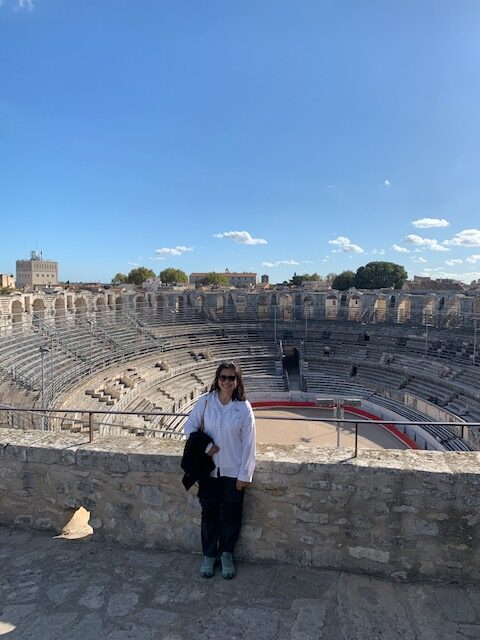

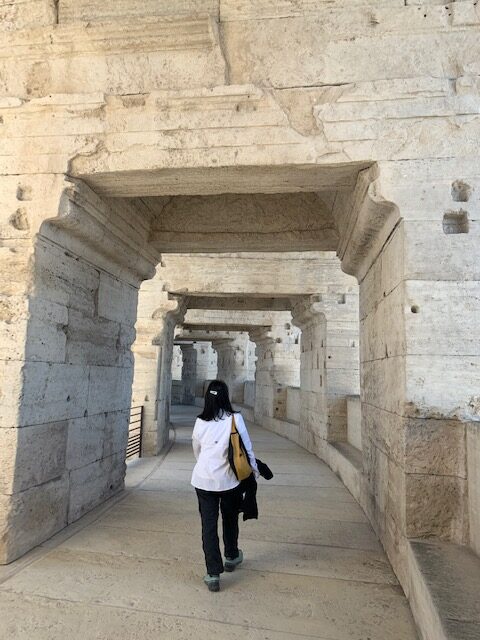

The amphitheater has been rebuilt such that the majority of the structure is standing. Three towers survived thousands of years of weathering and one that can be climbed for a birds eye view of the amphitheater. The spectator area has been retrofitted with wooden benches on top of the stone seats as the amphitheater is still used to hold events.
The amphitheater has three main passage ways. Two passageways are located at ground level which is an inner and outer. These passageways are higher in elevation than the amphitheater’s floor so there are some steps involved as the passageways pass through the accessways leading to the center arena. The passageway floors are dirt and sometimes uneven.
The inner passageway is under the arch structure that supports the lower seating area. It is a little dark in the inner passageway but you would be able to view the arch structures at a closer distance.
The outer passageway is basically under the upper seating area. It is more open as it passes by the amphitheater’s arched walls.
A third passageway is located in the upper level but does not completely encircle the amphitheater. To us, walking on this upper passageway was the most beautiful and enjoyable. Access to it is not as apparent as the other two passageways but you can get to it if you are in upper seats. The floor is made of large stone blocks. There were not a lot of people walking this passageway which made it nice.
Roman Theater


The Roman Theater is like an open air auditorium. The stone seating area for the audience is elevated and tiered and faces the stage. The seating area is in the form of a half circle. The stone steps where spectators would converge to get up to or down from their seat have depressions to show the wear endured through years of use.
The stone seating structure has been restored as the theater is still being used as a performance venue. The original stage is long gone and has been replaced with modern materials complete with steel structures to hold the spotlights. To the side of the stage lay stone ruins from the original structure, including mighty pillars.
Unless you want to stand within the theater grounds, you can view the Roman Theater from behind the metal rail fence.
Alyscamps (Necropolis)
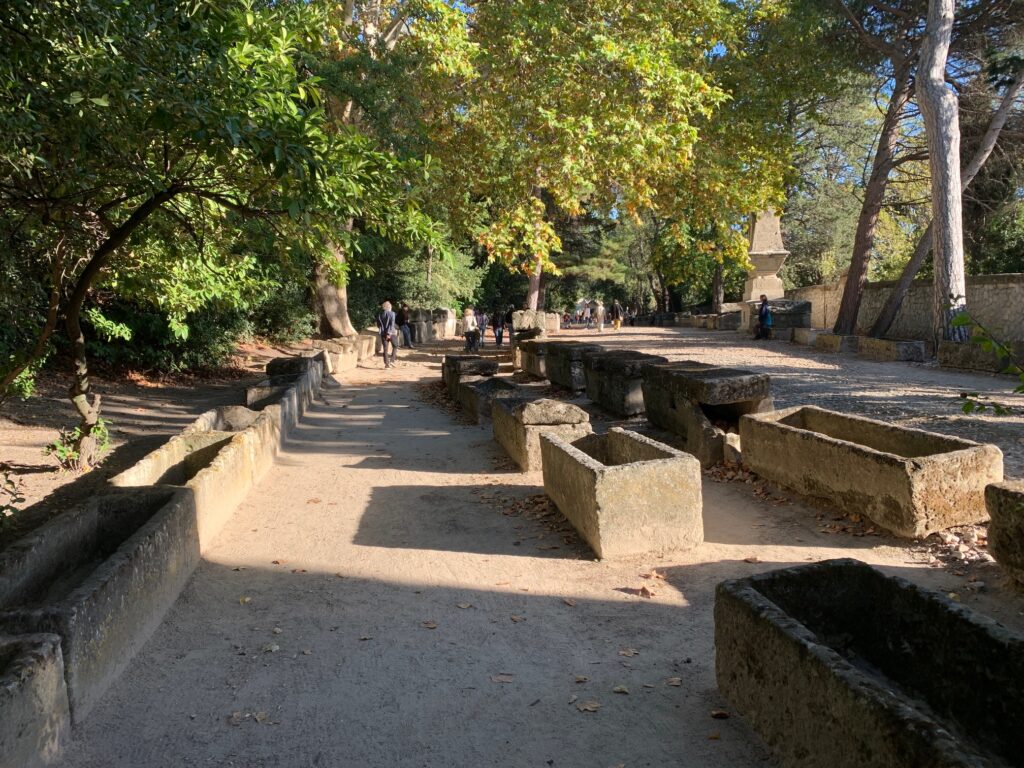

The Alyscamps is a large Roman necropolis or cemetery that has numerous stone coffins (sarcophagi) placed one after another almost forming a line. Back in Roman times, it was traditionally forbidden to bury someone within the city. So it was common for the roads immediately outside a city to be lined with tombs and mausoleums.
From the entrance gate, you will immediately see the sarcophagi. Some still have the stone cover while others are open. At the other end of the Alyscamps is the Eglise Saint-Honorat à Arles which is a domed church that is no longer being used.
Surprisingly, there are shows held in Alyscamps. Not being a proper venue for a show, the performers stand on skinny metal posts about 20 feet up in the air. The metal posts are quite flexible so the performers sway back and forth in a choreographed manner as if they were floating in air.
Musée Réattu


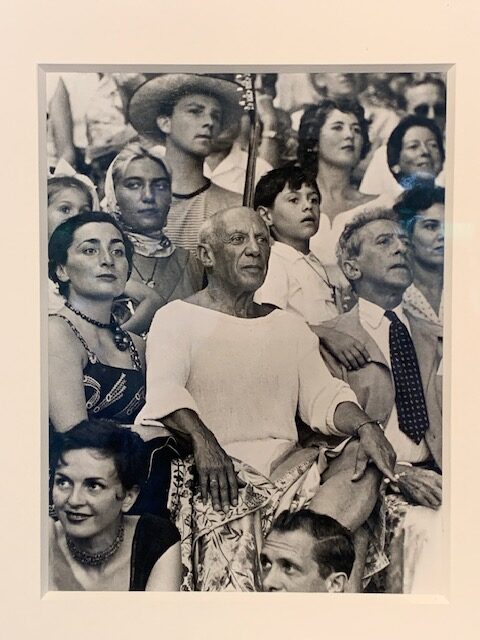

The museum displays work of different artists of different times. We only recognize Pablo Picasso. But that does not mean that the other artists’ work cannot be appreciated.
Van Gogh Displays


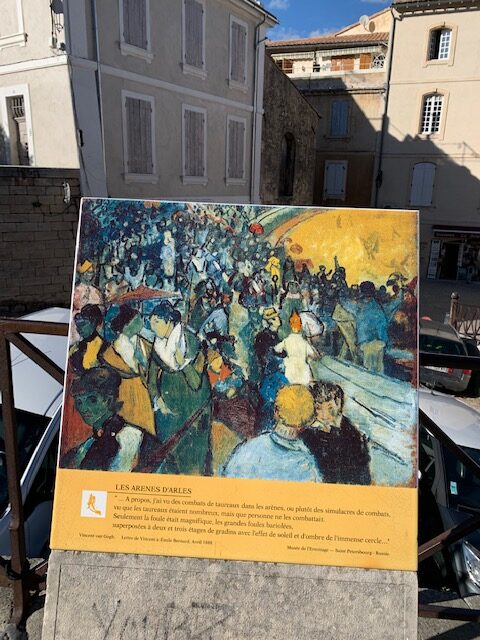

The city has markers of where Vincent Van Gogh set-up his easel to produce his painting. We found six of them. Four of them are shown on the map we purchased from the tourist office. We found the other two by just walking around. It just felt cool to be standing in the same place where the famous painter was inspired.
Open Air Market
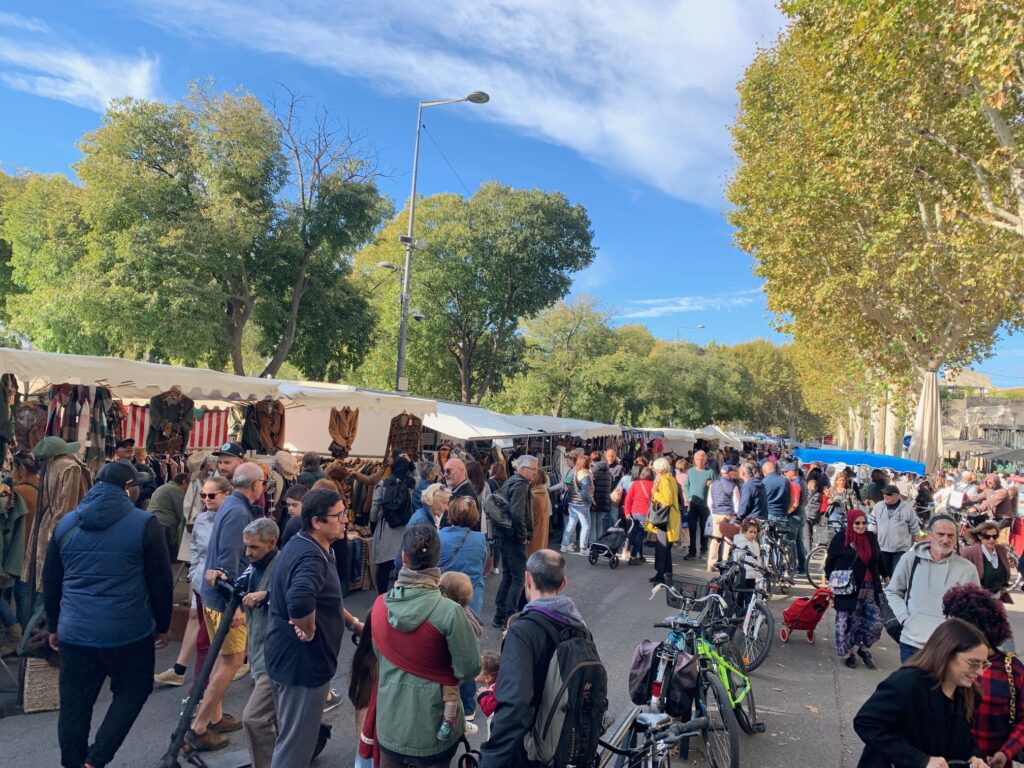

As an added bonus during our trip, Arles held an open air market on the Saturday we were there. The main street was closed and different vendors set up shop on the road. It was at least a kilometer long. Food, spices, clothes, kitchen wares and all kinds of household items were on display. There were even a few that sold small hardware and tools. The market is only there until mid-day. By afternoon, the street was open again and back to normal.
The Weather
The weather was perfect as summer was slowly fading away and giving way to autumn. The early mornings were cool but became comfortable with one or two layers of clothing by mid-morning. We shed our light jackets by mid-morning only to put them back on by sundown.
Arles Is Very Walkable
The part of the city that has the Roman monuments, museums and tributes to Van Gogh and Picasso is fortunately located in a very walkable area. From the train station, it is less than a 15-minute walk to the Roman arena which is the main attraction. Fortunately, there are accommodations that are located nearby.
The evenings are also wonderful as the old part of the city comes alive with people milling around or having a meal in one of the many cafes, bars and restaurants.
Summary
Arles is a city in southern France that is rich in history. The most prominent reminder of this history are the amphitheater and the Roman Theater. Both have been restored and preserved such that people can enjoy walking around its walls. The Roman Theater was built around 12 BC while the amphitheater was built around 90 AD. Other historical reminders of Roman influence are the Baths of Constantine and a necropolis called Alyscamps.
In more recent times, Vincent Van Gogh and Pablo Picassso once called Arles home. Van Gogh produced several paintings in Arles. The city pays tribute to Van Gogh by placing replicas of the painting at the location where it was actually painted. You can then see what Van Gogh saw back to draw inspiration for his creations. We are not art lovers but somehow, by standing at those locations and comparing the scenery to what was painted, we were able to appreciate what Van Gogh created.
Old town Arles itself is a nice place to explore. Its narrow streets lined with old buildings and a sprinkling of cafes and restaurants here and there makes it enjoyable to walk. To make it more interesting, visit Arles when they have an open air market. You never know what you might just find out there.

